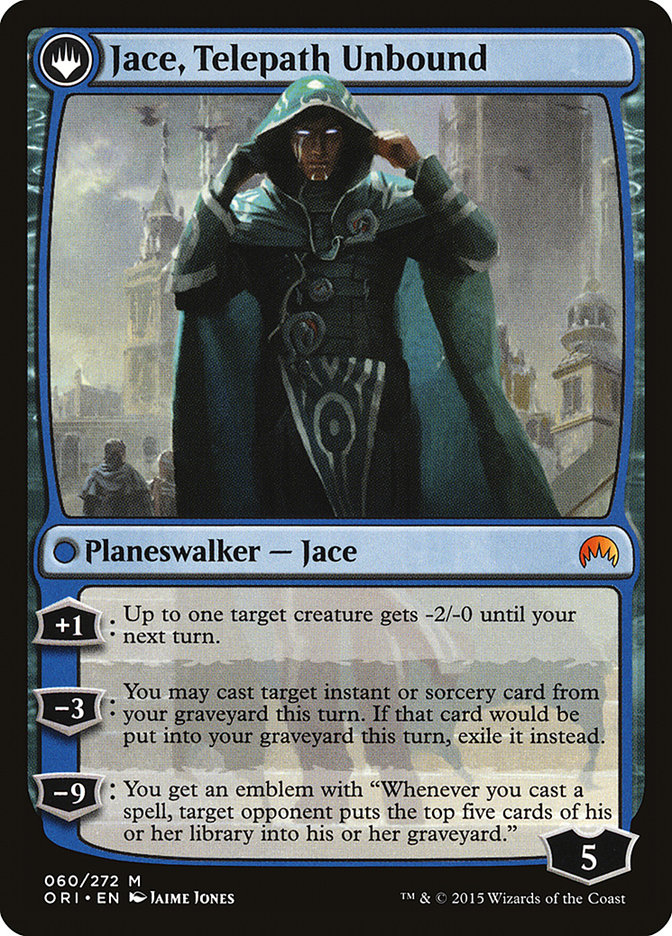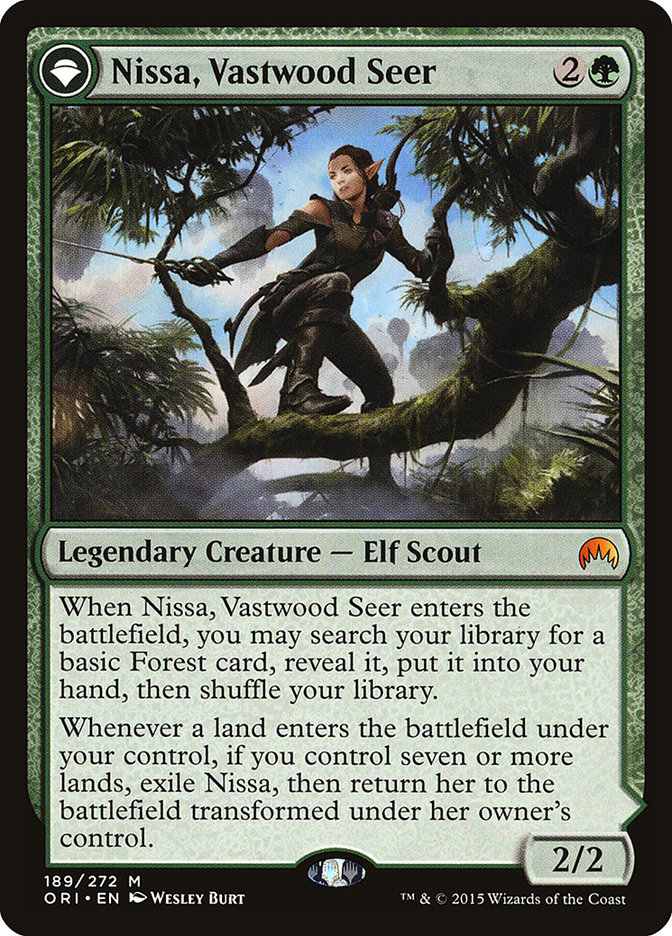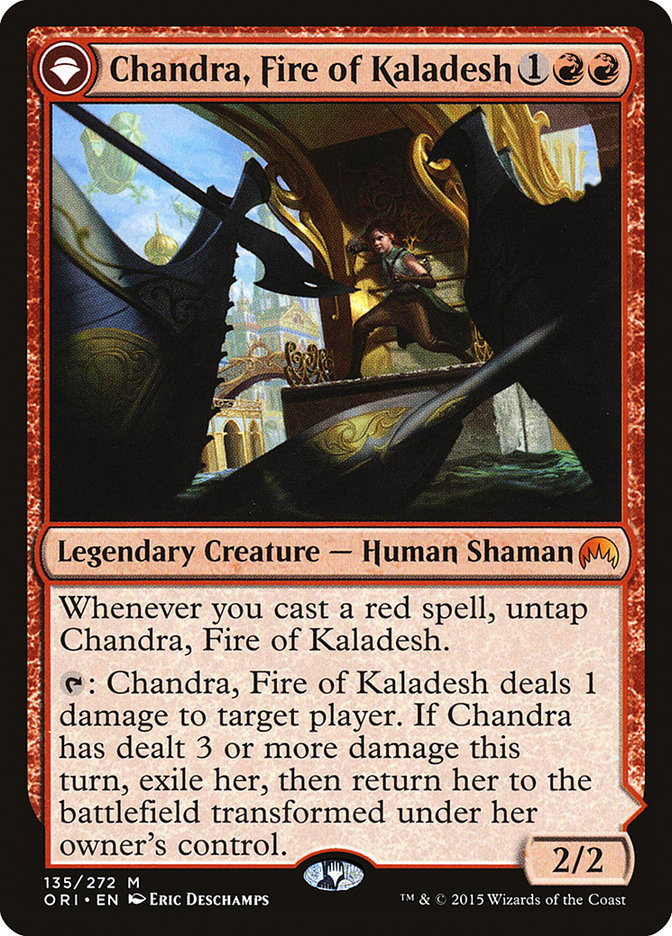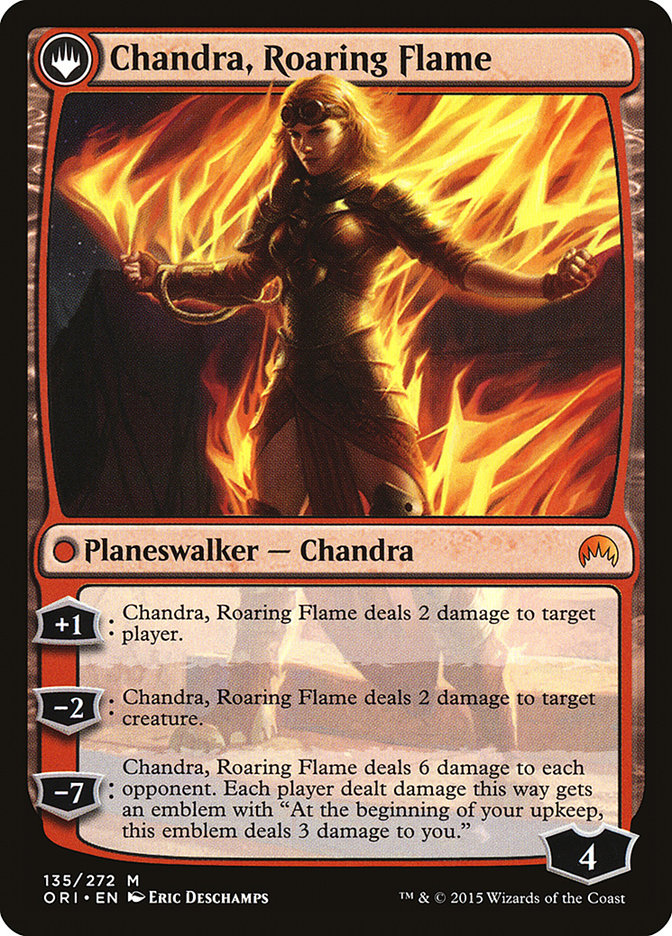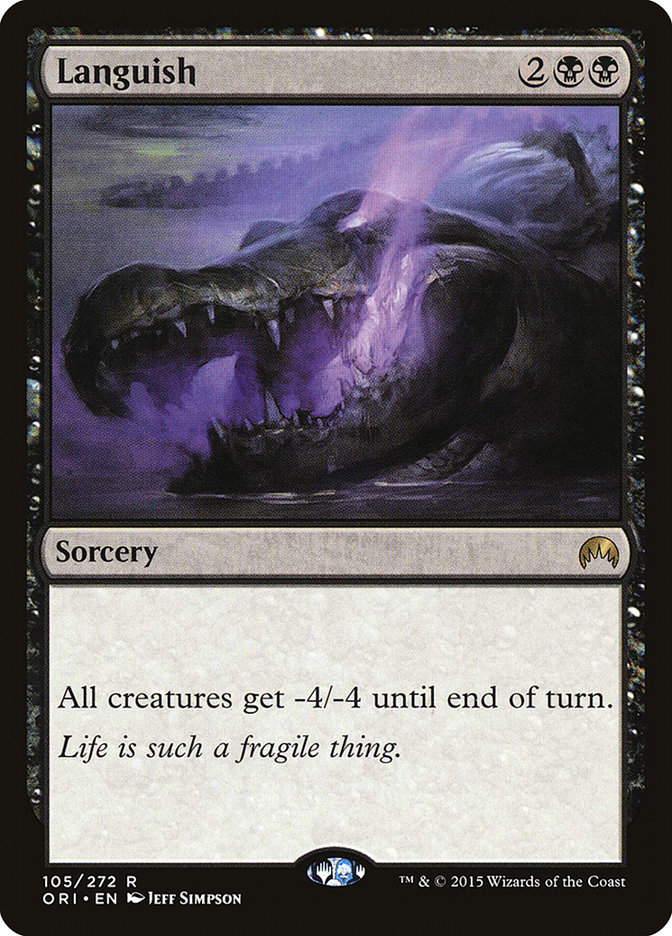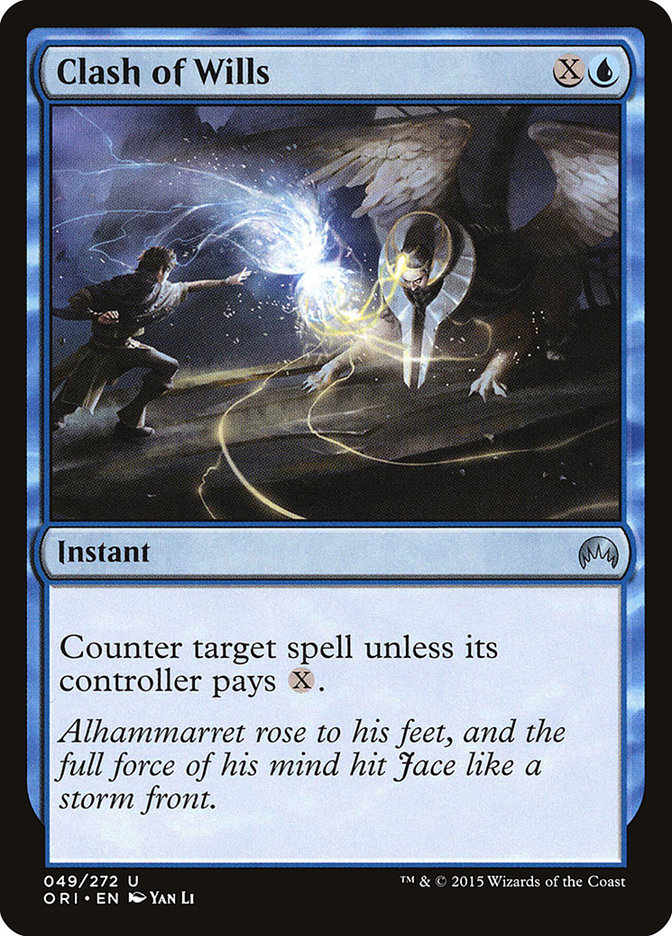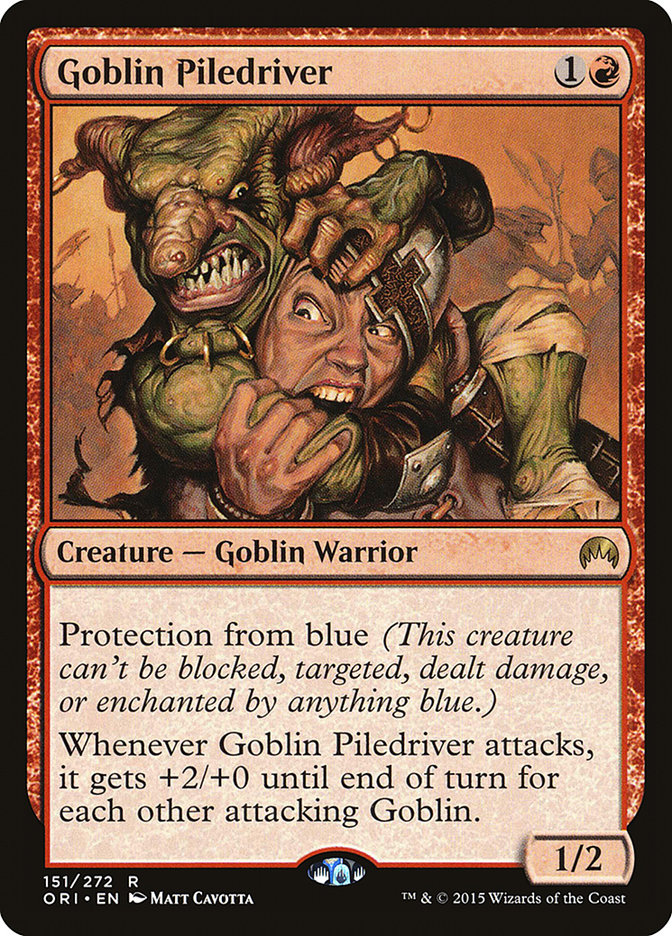Magic Origins is almost here, and with it comes a breath of new life for Standard. I can only handle so many Dragonlord Atarkas and Den Protectors before I go insane, so hopefully some of the new cards are powerful enough to make an impact. So far we have some great stuff to work with, but I don’t know if we’ll really grasp how good some of these cards are for quite some time. All it takes is one new card to change how we evaluate an older one.
I’ve been playing a decent amount of the new Standard in our Versus Series here on StarCityGames.com, and I’ve come to a few basic conclusions about how some of these new cards will impact the format. I also have a few good ideas on what decks I want to build, and how I want to build them. All of this theory could change with the release of a single spoiler, but it is important to get a head start so it makes the testing process much easier.
A First Glance at the Big Five
For starters, the Planeswalker we all know and love.
This is the card most people start with because blue is generally considered the most powerful color in Magic. Drawing cards is awesome, so why wouldn’t we want to start with blue? Jace, Vryn’s Prodigy isn’t exactly Jace, the Mind Sculptor, but it is certainly more interesting than Jace, the Living Guildpact.
Creatures that transform into something more powerful isn’t new anymore, as we saw with Innistrad, but transforming into planeswalkers? Once we start to see these cards in action, there are a few important questions we’ll have to ask when deciding if they are actually good in our deck or if they’re inherently good cards in a vacuum.
1) Are both sides of the card worth the mana and time investment?
If the answer is no, then you probably don’t want this card in your deck. Many blue decks, especially ones playing Treasure Cruise or other Delve spells, will want Jace, Vryn’s Prodigy. We haven’t had a proper Merfolk Looter in Standard in a while, and Jace looks to be a significant upgrade. If your deck has a lot of instants and sorceries to flashback, his flip side is also quite strong.
I don’t suspect his ultimate will come up too often, as you’ll likely want to get some instant gratification out of your planeswalkers before they get hit with the broad side of a Hero’s Downfall, but his +1 ability is surprisingly annoying. For just a two-mana investment, all parts about Jace, Vryn’s Prodigy seems worth it.
2) If one side isn’t very good, is the other side worth the investment?
This is most important for one of the planeswalkers:
While it will take a while to get to the planeswalker part of Nissa, the front side is actually pretty great. You don’t really mind drawing multiple copies of Nissa either, as the 2/2 body will die to pretty much everything and additional copies still find you a land in the process. Nissa’s ability to flip and create a 4/4 is also a powerful threat against midrange or control strategies, which will put a nice target on her head. If they don’t kill the front side on a very specific turn, she could threaten to gum up a later, more important turn.
But her flip side isn’t exactly bad. Drawing an extra card per turn (or ramping) is sweet. I wouldn’t mind drawing a free Coiling Oracle every turn, and that’s basically what her +1 ability is. But if you need to put pressure on the opponent, making a 4/4 is an option. I think that the strength of Nissa will come with her front-side ability, with her planeswalker side being just an added bonus.
3) How difficult is it to flip this planeswalker?
Assuming your opponent has no creatures in play, Chandra can attack, deal two damage, and then untap with any red spell you cast. This will allow her to flip pretty easily. But without being able to attack, it is going to be a bit harder. But how good is the upside on Chandra if you are able to flip her?
Well, she could kill some creatures, or just start pressuring your opponent’s life total. But outside of a dedicated burn deck, I don’t know if Chandra is going to be very good. I think Chandra would be phenomenal if she had Haste, or if her front side’s ability had more utility (like targeting creatures). But without the ability to “machine gun” a horde of opposing creatures, I don’t know if Chandra is going to see as much play as the rest.
4) What types of decks will these be good in?
Both Kytheon, Hero of Akros and Liliana, Heretical Healer are going to see a lot of play, but for nearly opposite reasons. Kytheon is a solid body on its own, costs so little mana, and can be a virtual 4/4 threat while investing just one mana. Most aggressive decks also want a way to protect themselves against End Hostilities or Crux of Fate, but his “indestructible” clause is pretty awkward when they just printed a sweeper that gets around it.
Liliana will take a lot more work to make her great, but a number of ways to abuse her already exist in Standard. Liliana is also fine in multiples, as the legend/planeswalker rule allows you to turn one copy into a zombie and transform the other one. Cards like Merciless Executioner function quite nicely with both sides of Liliana, and you even have the option to immediately trade your Liliana, Defiant Necromancer to bring the Merciless Exectutioner back to the battlefield.
And did I mention they also reprinted Fleshbag Marauader, in case you want to overload on the effect?
Another Take On Jeskai Tokens
Since the release of Dragons of Tarkir, I’ve had something of a soft spot for Jeskai Tokens. It was incredibly powerful when people didn’t realize the true potential of Dromoka’s Command, but it could see a resurgence when people start to understand just how powerful Jace, Vryn’s Prodigy can be. While the new Jace isn’t going to turn heads, the amount you have to invest into the card is paltry, and a deck like Jeskai Tokens loves to loot for multiple reasons.
It also likes to cast Treasure Cruise, over and over again.
But since Jeskai Tokens relies so heavily on Jeskai Ascendancy, that could be the end of it. In a world full of powerful standalone threats like Elspeth, Dragonlord Ojutai, and the rest of his kind, it might be foolish to continuously try to make a deck based around synergy rather than raw strength. But putting a bunch of different pieces together and seeing how they interact is exactly why I love Magic, and it will probably cost me dearly for years to come. Still, I like to have fun, and I’m not exactly one to give up the ghost.
Creatures (7)
Lands (24)
Spells (29)
- 3 Raise the Alarm
- 4 Dragon Fodder
- 2 Lightning Strike
- 4 Stoke the Flames
- 4 Treasure Cruise
- 4 Jeskai Ascendancy
- 2 Valorous Stance
- 3 Wild Slash
- 1 Roast
- 2 Secure the Wastes
Sideboard

For starters, there are no Hordeling Outbursts in this list. That is a conscious decision, though that may turn out to be incorrect over time. For now, I wanted less stress on the colors but I also wanted Stoke the Flames to continue being a powerful card in the deck. Dragon Fodder is a suitable replacement, but that could change in an instant. Since there are no Hordeling Outbursts, Stoke the Flames will be a little worse, as will Jeskai Ascendancy. But it will make the deck much more consistent overall, which is important for a deck relying on synergy more than power.
Jace, Vryn’s Prodigy is the newest addition to the deck, giving us a way to consistently (and quickly) dig for Jeskai Ascendancy while also fuelling Treasure Cruise. We turn on Jace’s spark quite easily, which will in turn allow us to flashback a spell or prep towards his ultimate. Stalling out mid-sized creatures with his +1 ability, coupled with our removal and chump blockers, could buy us enough time to get our engine up and running.
This is an early list of what I think the deck wants to do, but could have some drastically different builds going forward. Much like how we could compare the original Jeskai Tokens deck we played at the Season One Invitational in Richmond to the version I played the following weekend at the Standard Open in Syracuse, things will change once we develop a better understanding of the format. Magic Origins has a lot of cool stuff for us to think about, but seeing other people’s ideas in action is invaluable.
I’ve also been thinking about building a much more controlling build with Jace, featuring my frontrunner for “second best counterspell in Standard,” or possibly just “best counterspell that doesn’t force you to play a million stupid Dragons.”
Combined with Ojutai’s Command, Clash of Wills could make for a solid one-two punch for most midrange strategies. Those two counterspells work incredibly well with Dig Through Time, as well as any other big instants you might want to play.
Unfortunately, I’m not exactly sure where to take this version yet. I think red is an obvious splash if you want to play Soulfire Grand Master, which is a pretty obvious partner for Ojutai’s Command. The tricky part is finding a good win condition. Ultimately, this version of Jeskai would looking nothing like the Jeskai decks we see today. It would play out much more like the Flash decks from a few Standard seasons ago. We don’t exactly have Snapcaster Mage or Sphinx’s Revelation, but it shouldn’t be too difficult to find comparable threats and fill in the blanks.
While Clash of Wills is worse than its predecessors Syncopate and Condescend (and Power Sink etc), I think this format has enough midrange strategies that it could see a lot of play and actually be great. Even the control decks tap out for Dragonlord Ojutai. And if you stop and think about how often Silumgar’s Scorn counters your spell without having to reveal a Dragon, you might start to understand what I mean when I say it could be the best counterspell in the format. It just need the right home.
I don’t know if a pure control strategy could utilize it all that well. These types of counters have been much better when the opponent is forced to play their spell into them. Conditional counterspells like Mana Leak, Rune Snag, and Clash of Wills will get worse as the game goes longer simply because the opponent will hit more land drops. If you’re forced to sit on your hands so that you can counter something with Clash of Wills, you’ll eventually get baited by something cheap (like Fleecemane Lion) and get your back broken with their follow-up spell while you’re tapped out.
Clash of Wills and counterspells like it are also weaker when you have to tap out on the regular. I think Clash of Wills could be phenomenal alongside Secure the Wastes or something similar as a big finisher. Gideon’s Phalanx or even Pearl Lake Ancient could end up being the finishers of choice, but I like the versatility that comes with Secure the Wastes. Putting up a few attackers or blockers on turn four or five isn’t all that bad, but this option will be much worse if Bile Blight makes a significant comeback in Standard.
Cards To Include In Existing Archetypes
Most red decks have missed Mizzium Mortars as a cheap means of dealing with Courser of Kruphix and the like. Now they have the option to throw it at the opponent’s dome, and it can’t be countered if you have Spell Mastery. This card could also potentially respawn Burn as an archetype, resulting in the Cult of Psully to rejoice.
While Blue Devotion has seen an uptick in popularity with the printing of Collected Company as a soft splash, Harbinger of the Tides gives the deck exactly what it needed: a two-drop that enabled Devotion for Thassa, God of the Sea. While I think the strength of Harbinger of the Tides’s ability is being overhyped, people seem to forget how often Blue Devotion cast Tidebinder Mage without a target. Sometimes a 2/2 for UU is enough to get the job done, so long as it gives you enough devotion to make Thassa a real threat.
This one is a no-brainer. With Dragon Fodder, Goblin Rabblemaster, and Hordeling Outburst in the format, Goblin Piledriver already has a head start towards making a huge impact. This reprint might cause cards like Frenzied Goblin to see more play, but don’t be surprised if Hulkamania starts to run wild on you.
Drown in Sorrow never looked so good.
This card fits somewhere between “build around me” and “pair with Siege Rhino.” I think that a new archetype could spawn from just this card, thanks to the fact that so many threats in the format are 4/5’s. Reaper of the Wild could even make a comeback. Languish is also great for killing Dragonlord Ojutai, which has been a huge problem for G/B decks over the last few months. If you’re able to kill Ojutai without killing your own creatures, plus also gain one of the most efficient sweepers ever printed against aggressive decks, Languish could be a Standard all-star.
Original Ideas
While Magic Origins has a host of cards that could fit into existing archetypes, it also seems to have a lot of potential for generating new ones. Goblins, Elves, Artifacts, and even Constellation all seem to have a bit of support from Magic Origins.
It will take time, and possibly set rotations, for many of these cards to shine. Every new set could give us more tools to make some of this stuff work to its fullest potential. I’m also positive that many of the cards I’ve dismissed from my initial glances at the set are much stronger than I give them credit for. It is hard to see something’s full potential without context. It even took a few weeks for people to understand how good Den Protector was! And now, with hindsight, it seems like a slam-dunk of a card.
There is so much potential in Magic Origins. There are so many powerful spells and splashy effects that I honestly don’t even know where to begin. I could also see a number of these cards making waves in older formats. Giving Legacy a Timetwister seems absurd, even if it does end your turn. The fact that Clash of Wills gets me excited and probably wasn’t even on your radar as playable should say something about the complexity of Magic Origins.
When the spoiler is fully released, we’ll be able to better understand where the set will take us. Until then, I’m sitting on my hands. And I can’t wait to see what comes next.


